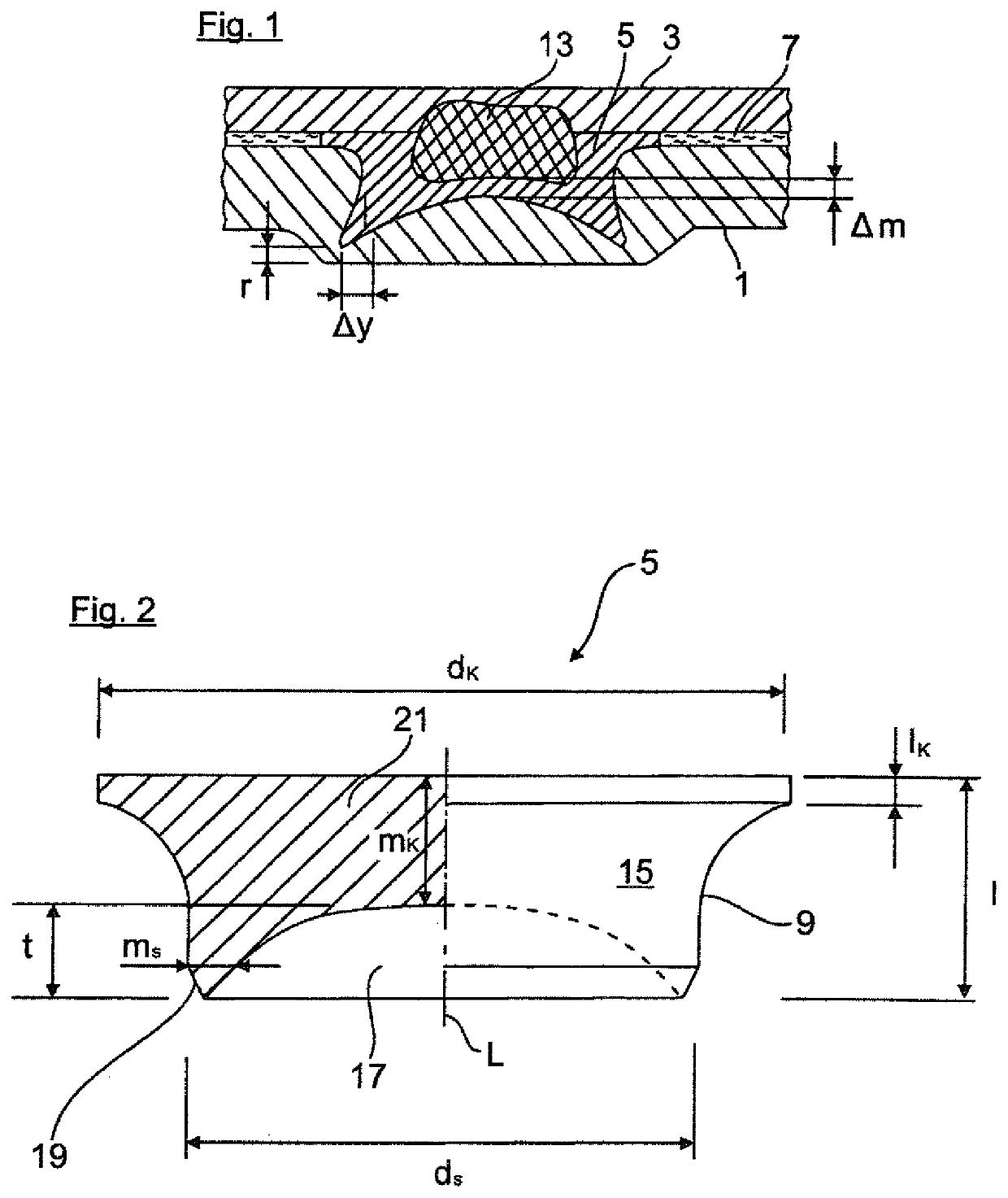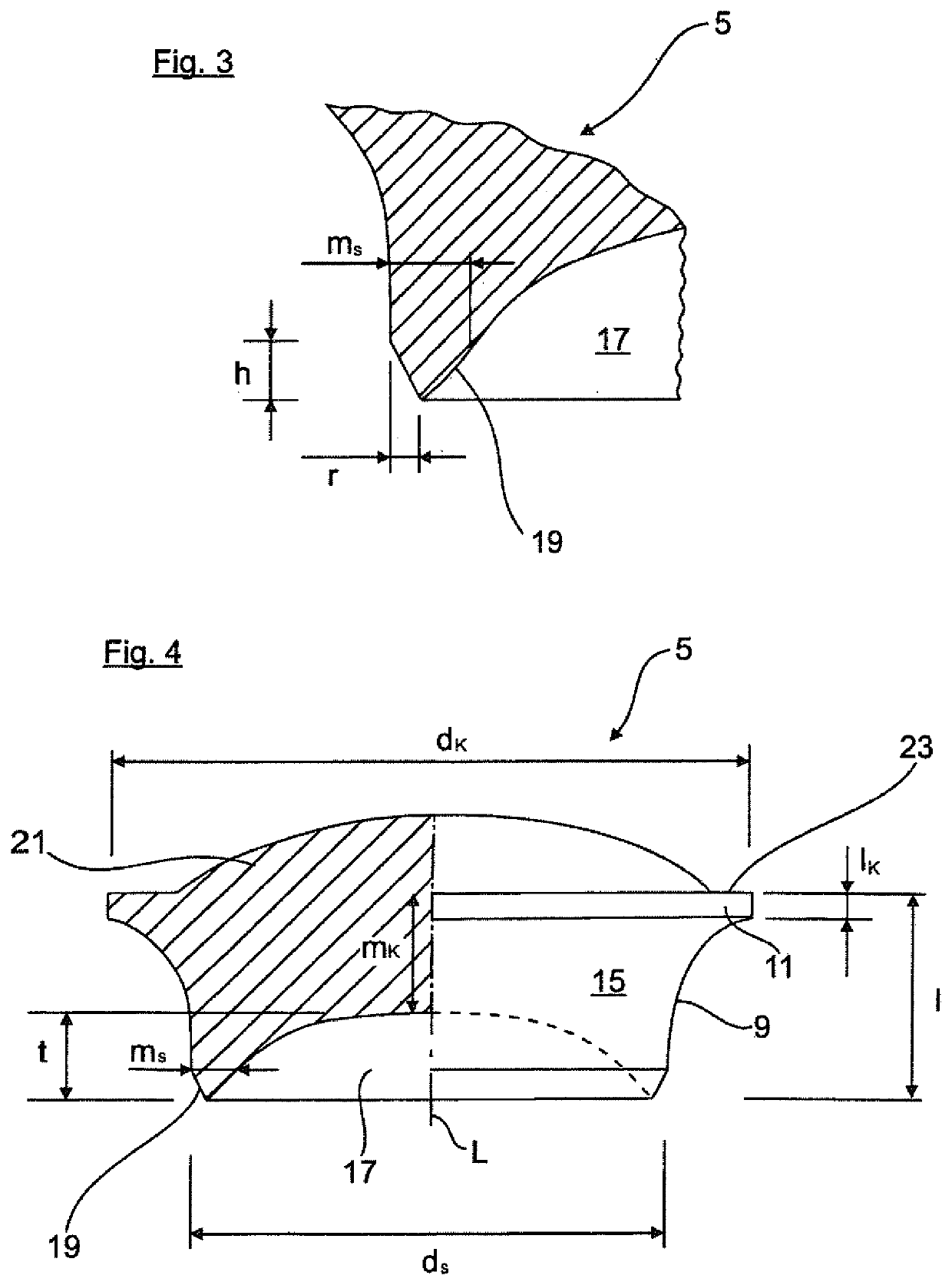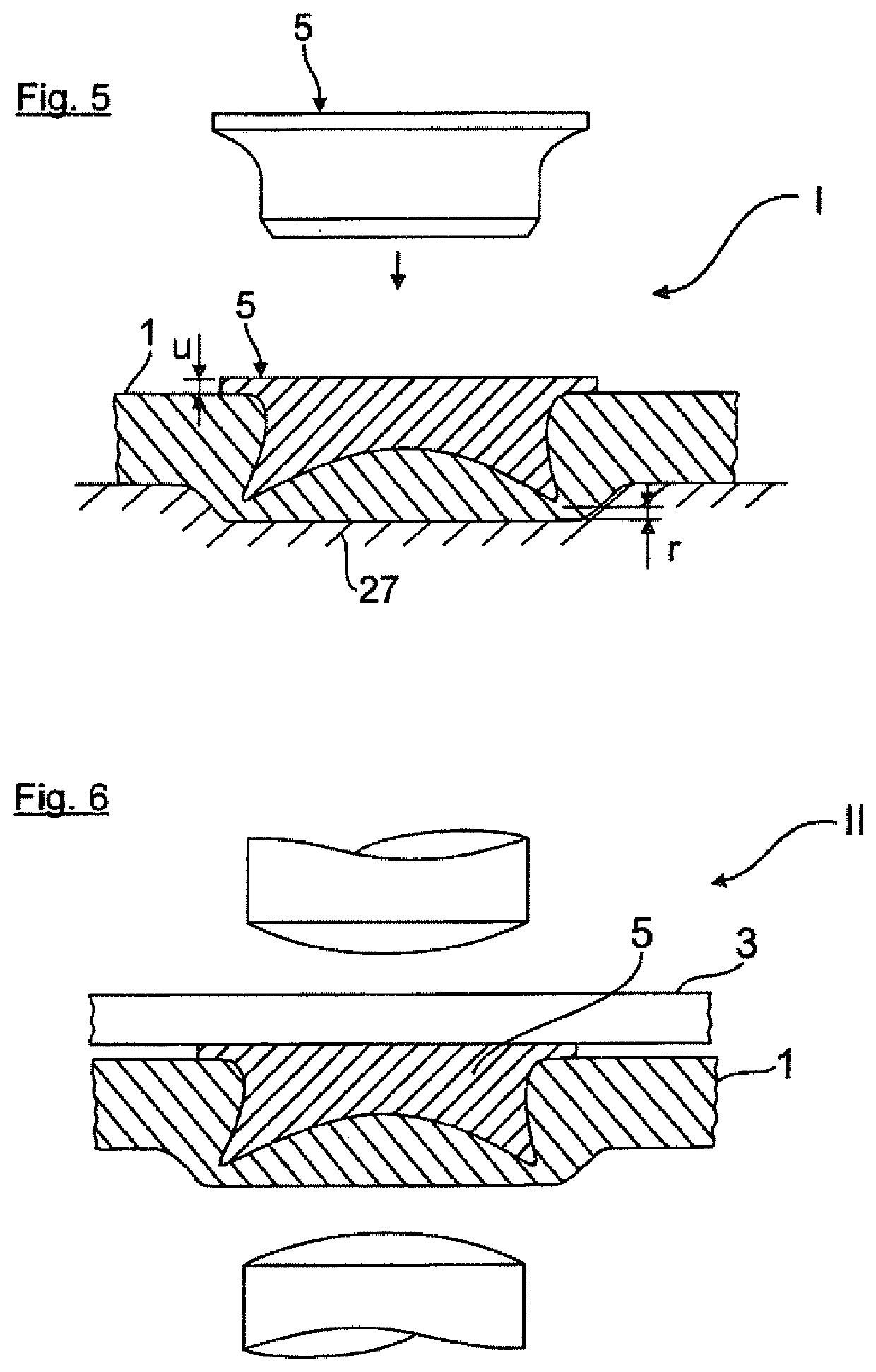Method for joining at least two structural parts
a structural part and jointing technology, applied in the direction of threaded fasteners, screwdrivers, manufacturing tools, etc., can solve the problems of increased gap, increased manufacturing costs, and increased manufacturing costs, so as to reduce the visibility of rivets, reduce the effect of die gravure and expand the range of applications
- Summary
- Abstract
- Description
- Claims
- Application Information
AI Technical Summary
Benefits of technology
Problems solved by technology
Method used
Image
Examples
Embodiment Construction
[0033]FIG. 1 shows a finished component connection in which an aluminum sheet as a first joining partner is connected with a steel sheet 3 as a second joining partner. The two joining partners 1, 3 are connected with each other via an auxiliary joining element 5. In addition an adhesive layer 7 is provided between the joining partners 1, 3. The above material pairing is purely exemplary. As an alternative also any other materials are conceivable, for example magnesium and potentially also plastic materials.
[0034]According to the figures the auxiliary joining element 5 is formed with a hollow element shaft 9 and an element head 11. In FIG. 1 the element shaft 9 is driven into the material of the aluminum sheet (first joining partner) 1 in a setting step I described below while maintaining a residual material thickness r. The element head 11 of the auxiliary joining element 5 on the other hand is welded with the second component (steel sheet part) 3 so as to form a weld nugget 13.
[003...
PUM
| Property | Measurement | Unit |
|---|---|---|
| thickness | aaaaa | aaaaa |
| thickness | aaaaa | aaaaa |
| diameter | aaaaa | aaaaa |
Abstract
Description
Claims
Application Information
 Login to View More
Login to View More - R&D
- Intellectual Property
- Life Sciences
- Materials
- Tech Scout
- Unparalleled Data Quality
- Higher Quality Content
- 60% Fewer Hallucinations
Browse by: Latest US Patents, China's latest patents, Technical Efficacy Thesaurus, Application Domain, Technology Topic, Popular Technical Reports.
© 2025 PatSnap. All rights reserved.Legal|Privacy policy|Modern Slavery Act Transparency Statement|Sitemap|About US| Contact US: help@patsnap.com



